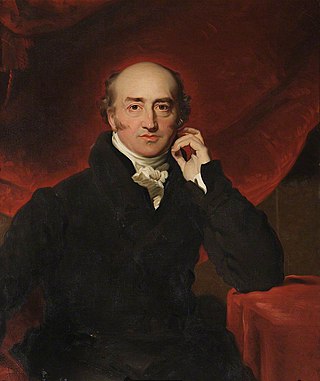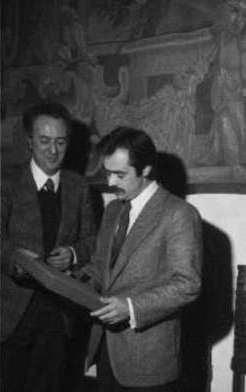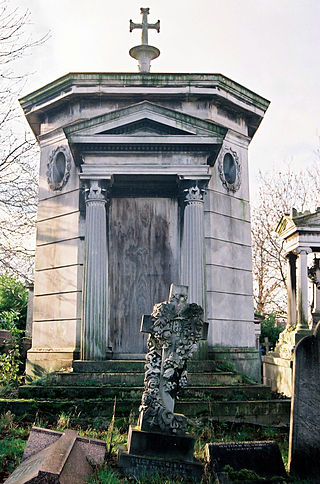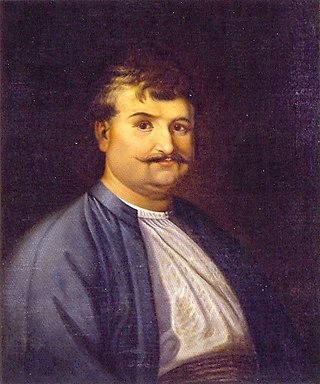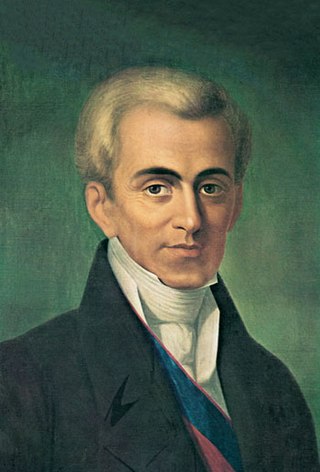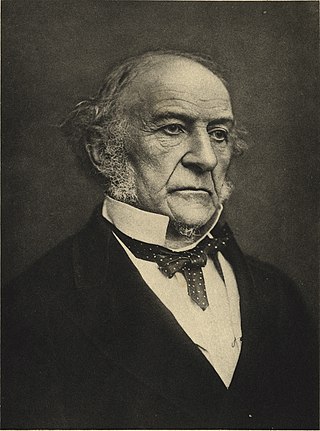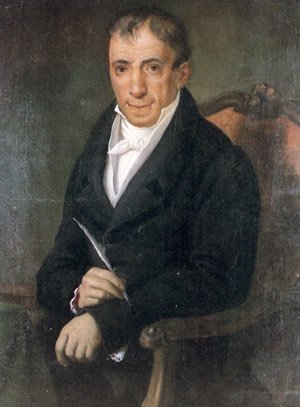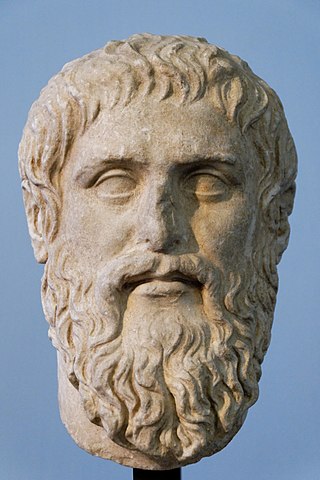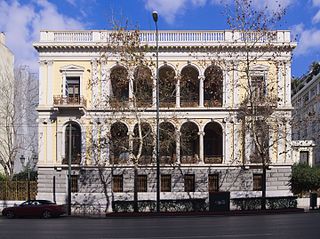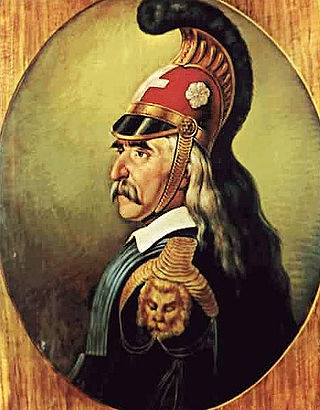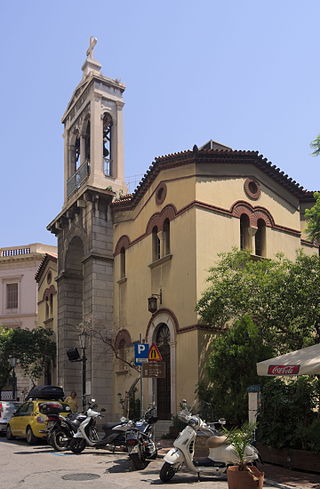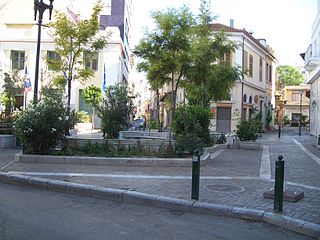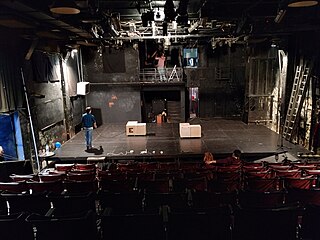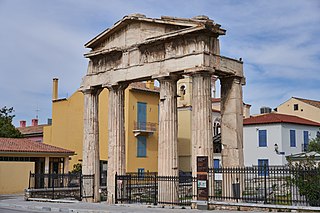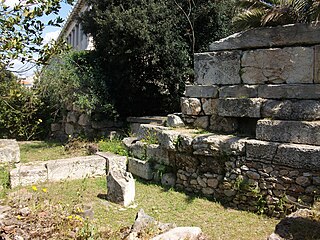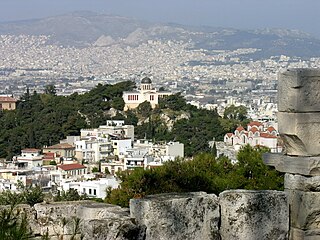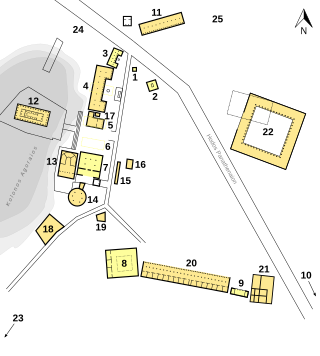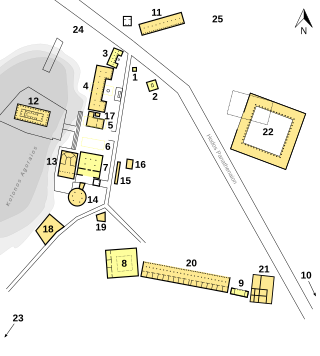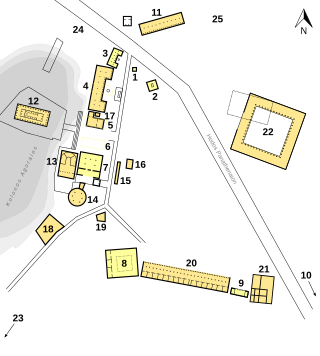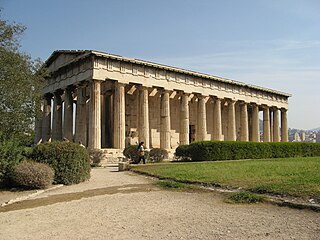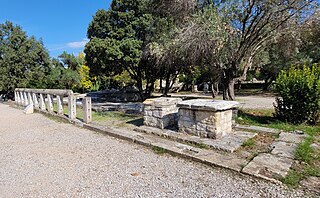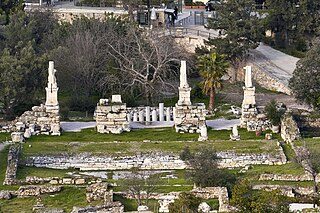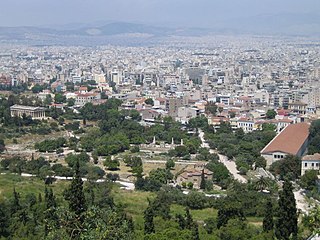Self-guided Sightseeing Tour #5 in Athens, Greece
Legend
Guided Free Walking Tours
Book free guided walking tours in Athens.
Guided Sightseeing Tours
Book guided sightseeing tours and activities in Athens.
Tour Facts
7.6 km
234 m
Experience Athens in Greece in a whole new way with our free self-guided sightseeing tour. This site not only offers you practical information and insider tips, but also a rich variety of activities and sights you shouldn't miss. Whether you love art and culture, want to explore historical sites or simply want to experience the vibrant atmosphere of a lively city - you'll find everything you need for your personal adventure here.
Activities in AthensIndividual Sights in AthensSight 1: George Canning
George Canning was a British Tory statesman. He held various senior cabinet positions under numerous prime ministers, including two important terms as foreign secretary, finally becoming Prime Minister of the United Kingdom for the last 119 days of his life, from April to August 1827.
Sight 2: Κώστας Περρίκος
Kostas Perrikos was a Greek Air Force officer and leader of the PEAN resistance movement in World War II. He is the father of the UN arms control Commissioner Dimitris Perrikos.
Sight 3: Alexandros Panagoulis
Alexandros Panagoulis was a Greek politician and poet. He took an active role in the fight against the Regime of the Colonels (1967–1974) in Greece. He became famous for his attempt to assassinate dictator Georgios Papadopoulos on 13 August 1968, but also for the torture to which he was subjected during his detention. After the restoration of democracy, he was elected to the Greek parliament as a member of the Centre Union (E.K.).
Sight 4: Panagis Vallianos
Panayis Athanase Vagliano was a Greek merchant and shipowner, acclaimed as the 'father of modern Greek shipping'.
Sight 5: Museum and Study Centre of the Greek Theatre
The Museum and Study Centre of the Greek Theatre is a museum in Athens, Greece. It was founded by the historian of the Greek Theatre, Yiannis Sideris in 1938.
Sight 6: Kostis Palamas
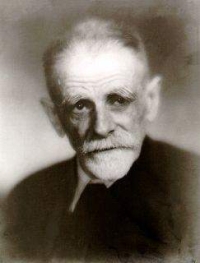
Kostis Palamas was a Greek poet who wrote the words to the Olympic Hymn. He was a central figure of the Greek literary generation of the 1880s and one of the cofounders of the so-called New Athenian School along with Georgios Drosinis and Ioannis Polemis.
Sight 7: Rigas Feraios
Rigas Velestinlis or Feraios was a Greek writer, politician, thinker and revolutionary. He is considered a national martyr and a forerunner of the Greek Revolution of 1821.
Sight 8: Ioannis Kapodistrias
Count Ioannis Antonios Kapodistrias, sometimes anglicized as John Capodistrias, was a Greek statesman who was one of the most distinguished politicians and diplomats of 19th-century Europe.
Sight 9: William Gladstone
William Ewart Gladstone was a British statesman and Liberal Party politician. In a career lasting over 60 years, he was Prime Minister of the United Kingdom for 12 years, spread over four non-consecutive terms beginning in 1868 and ending in 1894. He also was Chancellor of the Exchequer four times, for over 12 years. Apart from 1845 to 1847, he was a Member of Parliament (MP) from 1832 to 1895 and represented a total of five constituencies.
Sight 10: Πατριάρχης Γρηγόριος Ε΄
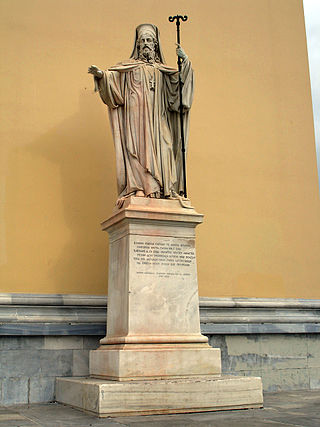
The statue of Patriarch Gregory V is the work of sculptor George Fytalis.
Sight 11: Adamantios Korais
Adamantios Korais or Koraïs was a Greek scholar credited with laying the foundations of modern Greek literature and a major figure in the Greek Enlightenment. His activities paved the way for the Greek War of Independence and the emergence of a purified form of the Greek language, known as Katharevousa. Encyclopædia Britannica asserts that "his influence on the modern Greek language and culture has been compared to that of Dante on Italian and Martin Luther on German".
Sight 12: Plato
Plato, was an ancient Greek philosopher of the Classical period who is considered a foundational thinker in Western philosophy and an innovator of the written dialogue and dialectic forms. He raised problems for what became all the major areas of both theoretical philosophy and practical philosophy, and was the founder of the Platonic Academy, a philosophical school in Athens where Plato taught the doctrines that would later become known as Platonism.
Sight 13: Socrates
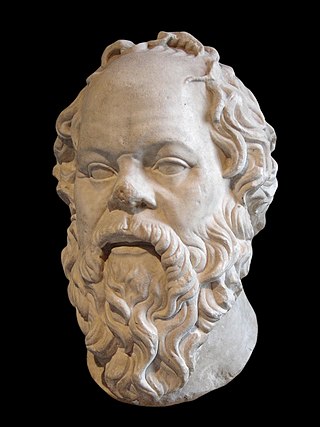
Socrates was a Greek philosopher from Athens who is credited as the founder of Western philosophy and as among the first moral philosophers of the ethical tradition of thought. An enigmatic figure, Socrates authored no texts and is known mainly through the posthumous accounts of classical writers, particularly his students Plato and Xenophon. These accounts are written as dialogues, in which Socrates and his interlocutors examine a subject in the style of question and answer; they gave rise to the Socratic dialogue literary genre. Contradictory accounts of Socrates make a reconstruction of his philosophy nearly impossible, a situation known as the Socratic problem. Socrates was a polarizing figure in Athenian society. In 399 BC, he was accused of impiety and corrupting the youth. After a trial that lasted a day, he was sentenced to death. He spent his last day in prison, refusing offers to help him escape.
Sight 14: Numismatic Museum
The Numismatic Museum of Athens is one of the most important museums in Greece and it houses a collection of over 500,000 coins, medals, gems, weights, stamps and related artefacts from 1400BC to modern times. The collection constitutes one of the richest in the world, paralleled by those of the British Museum in London, the Bibliothèque Nationale in Paris, the State Hermitage Museum in St. Petersburg, the Bode Museum in Berlin, and the American Numismatic Society in New York. The museum itself is housed in the mansion of the archaeologist Heinrich Schliemann, formally known as Iliou Melathron.
Sight 15: Theodoros Kolokotronis
Theodoros Kolokotronis was a Greek general and the pre-eminent leader of the Greek War of Independence (1821–1829) against the Ottoman Empire.
Sight 16: National Historic Museum
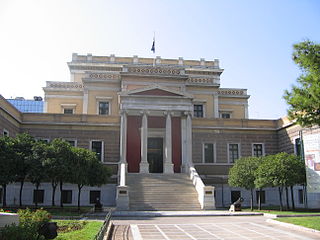
The National Historical Museum is a historical museum in Athens. Founded in 1882, is the oldest of its kind in Greece. It is located in the Old Parliament House at Stadiou Street in Athens, which housed the Hellenic Parliament from 1875 until 1932. A branch of the National History Museum has been organized and operated there since 2001.
Sight 17: Saint George Karytsis
Agios Georgios tou Karykis or Karytsi is a Christian church in Athens, Greece. The original medieval church was destroyed during the revolution of 1821 and was roughly rebuilt under King Otto. It was then reconstructed from the ground up and with larger dimensions in 1845-1849, designed by Lysandros Kaftanzoglou. He did not retain any trace of the old temple. The architecture of today's church is of Greek Byzantine style, while it is characterized by the distinct central pillar of gray marble, on top of which there is a white bell tower. In 1849 the dome collapsed and struts were added to the side walls for additional support.
Sight 18: Psiri
The small district of Psirri is located in the historic center of Athens and is one of the oldest districts of the city. It spreads around Psirri Square or Heroes' Square, to which the five important streets of the district lead: Miaouli Street, Karaiskaki Street, Agioi Anargyroi Street, Aristofanous Street and Aeschylou Street.
Sight 19: Embros
The Theater in the Old Printing House of Embros or Theater EMBROS is a theatrical space in the district of Psirri in the municipality of Athens, in a listed building constructed in the 1930s and which originally functioned as a printing house of the newspaper EMPROS. From 1988 to 2007 it operated for the first time as a theater. Although it belonged to the Ministry of Culture, in 2011 it was occupied by the artistic "Mavili Movement" and since then it has been used as a self-managed theater. In March 2022, the space was granted by the Public Properties Company to the Municipality of Athens and continues to operate as a self-managed space.
Sight 20: Tzistarakis Mosque
Get Ticket*Tzistarakis Mosque is an Ottoman mosque, built in 1759, in Monastiraki Square, central Athens, Greece. It is now functioning as an annex of the Museum of Greek Folk Art.
Sight 21: Gate of Athena Archegetis
The Gate of Athena Archegetis is situated west side of the Roman Agora, in Athens and considered to be the second most prominent remain in the site after the Tower of the Winds.
Sight 22: Library of Pantainos
The Library of Pantainos was a building in ancient Athens. It was located at the southeast end of the Agora of Athens, south of the Stoa of Attalus, on the left side of Panathenaion Street. It was built by the Athenian philosopher Titus Flavius Pantainos between 98 and 102 AD, during the reign of the Roman emperor Trajan. The library building was dedicated to Athena Archegetis, with Trajan himself and the people of Athens, according to an inscription on the lintel of the main entrance, which is preserved embedded in the late Roman wall,.
Sight 23: Eleusinion
Eleusinion, also called the City Eleusinion was a sanctuary on the lower part of the north slope of the Acropolis in Athens, Greece, dedicated to Demeter and Kore (Persephone). It was the central hub of Eleusinian Mysteries within Athens and the starting point for the annual procession to Eleusis, in the northwest of Attica. Religious activity is attested in the area from the 7th century BC and construction took place throughout late Archaic, Classical, Hellenistic, and Roman periods. The sanctuary was enclosed within the new city walls built after the Herulian sack of Athens in AD 267 and it remained in use until the late fourth century AD.
Sight 24: Λόφος Νυμφών
Hill of the Nymphs or Hill of the Observatory is a rocky hill of Athens, located opposite the Temple of Hephaestus.
Sight 25: Εθνικό Αστεροσκοπείο Αθηνών
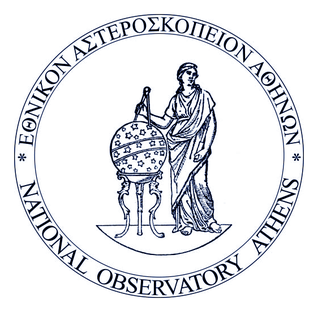
The National Observatory of Athens is a research institute in Athens, Greece. Founded in 1842, it is the oldest research foundation in Greece. The Observatory was the first scientific research institute built after Greece became independent in 1829, and one of the oldest research institutes in Southern Europe. It was built around the same period as the United States Naval Observatory.
Sight 26: Royal Stoa
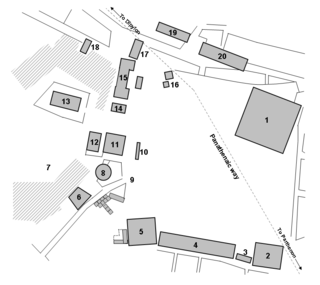
Stoa Basileios, meaning Royal Stoa, was a Doric stoa in the northwestern corner of the Athenian Agora, which was built in the 6th century BC, substantially altered in the 5th century BC, and then carefully preserved until the mid-second century AD. It is among the smallest known Greek stoas, but had great symbolic significance as the seat of the Athenian King Archon, repository of Athens' laws, and site of "the stone" on which incoming magistrates swore their oath of office.
Sight 27: Ποικίλη Στοά
The Stoa Poikile or Painted Portico was a Doric stoa erected around 460 BC on the north side of the Ancient Agora of Athens. It was one of the most famous sites in ancient Athens, owing its fame to the paintings and war-booty displayed within it and to its association with ancient Greek philosophy, especially Stoicism.
Sight 28: Temple of Apollo Patroos
The Temple of Apollo Patroos is a small ruined temple on the west side of the Ancient Agora of Athens. The original temple was an apsidal structure, built in the mid-sixth century BC and destroyed in 480/79 BC. The area probably remained sacred to Apollo. A new hexastyle ionic temple was built ca. 306-300 BC, which has an unusual L-shaped floor plan. Some fragments from the sculptural decoration of this structure survive. The colossal cult statue, by Euphranor, has also been recovered.
Sight 29: Stoa of Zeus Eleftherios
The Stoa of Zeus at Athens, was a two-aisled stoa located in the northwest corner of the Ancient Agora of Athens. It was built c. 425 BC–410 BC for religious purposes in dedication to Zeus by the Eleutherios : a cult founded after the Persian War. Stoas were not commonly used for religious purposes, but were typically built for promenades and meetings.
Sight 30: Temple of Hephaestus
The Temple of Hephaestus or Hephaisteion, is a well-preserved Greek temple dedicated to Hephaestus; it remains standing largely intact today. It is a Doric peripteral temple, and is located at the north-west side of the Agora of Athens, on top of the Agoraios Kolonos hill. From the 7th century until 1834, it served as the Greek Orthodox church of Saint George Akamates. The building's condition has been maintained due to its history of varied use.
Sight 31: Monument of the Eponymous Heroes
The Monument of the Eponymous Heroes (Ancient Greek: Μνημείο των Επωνύμων Ηρώων, romanized: Mnēmeio tōn Epōnymōn Hērōōn, located in the Ancient Agora of Athens, Greece adjacent to the Metroon, was a marble podium that bore the bronze statues of the heroes representing the phylai of Athens. The monument was surrounded by a wooden fence on stone posts. All that remains on the modern agora are pieces of a long statue base with the space for ten statues and two tripods at the ends with a partially restored fence. The large size and prominent position make the monument into a landmark for the Agora visitors.
Sight 32: Odeon of Agrippa
The Odeon of Agrippa was a large odeon located in the centre of the ancient Agora of Athens. It was built about 15 BC, occupying what had previously been open space in the centre of the Agora. It was a gift to the people of Athens by Marcus Vipsanius Agrippa, a Roman statesman and general.
Sight 33: Museum of the Ancient Agora
The ancient Agora of Athens is the best-known example of an ancient Greek agora, located to the northwest of the Acropolis and bounded on the south by the hill of the Areopagus and on the west by the hill known as the Agoraios Kolonos, also called Market Hill. The Agora's initial use was for a commercial, assembly, or residential gathering place.
Share
Disclaimer Please be aware of your surroundings and do not enter private property. We are not liable for any damages that occur during the tours.
GPX-Download For navigation apps and GPS devices you can download the tour as a GPX file.
